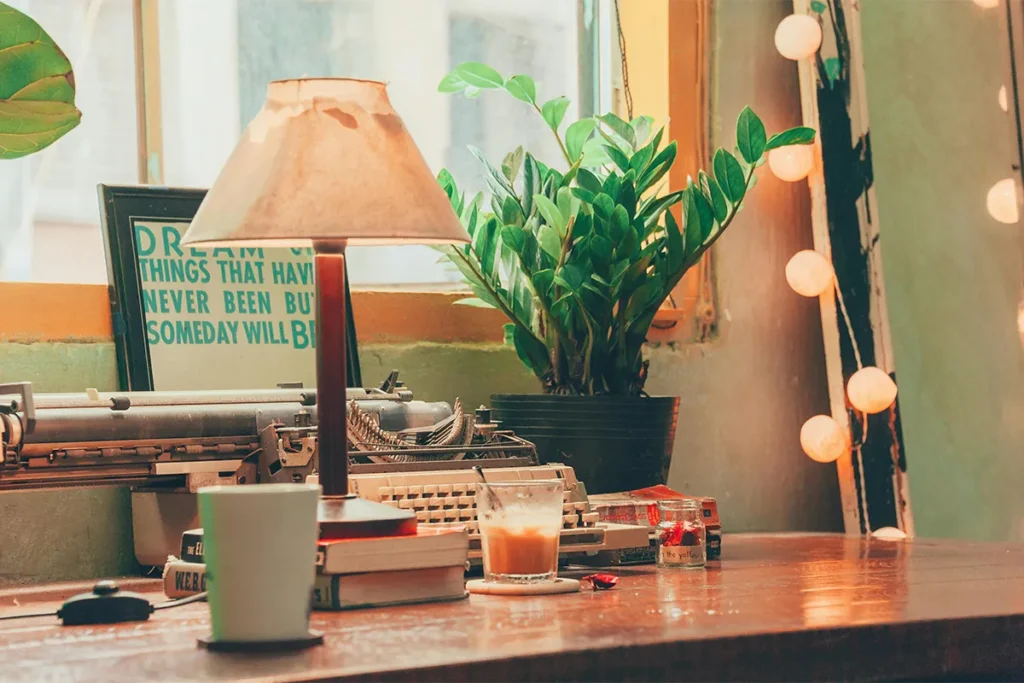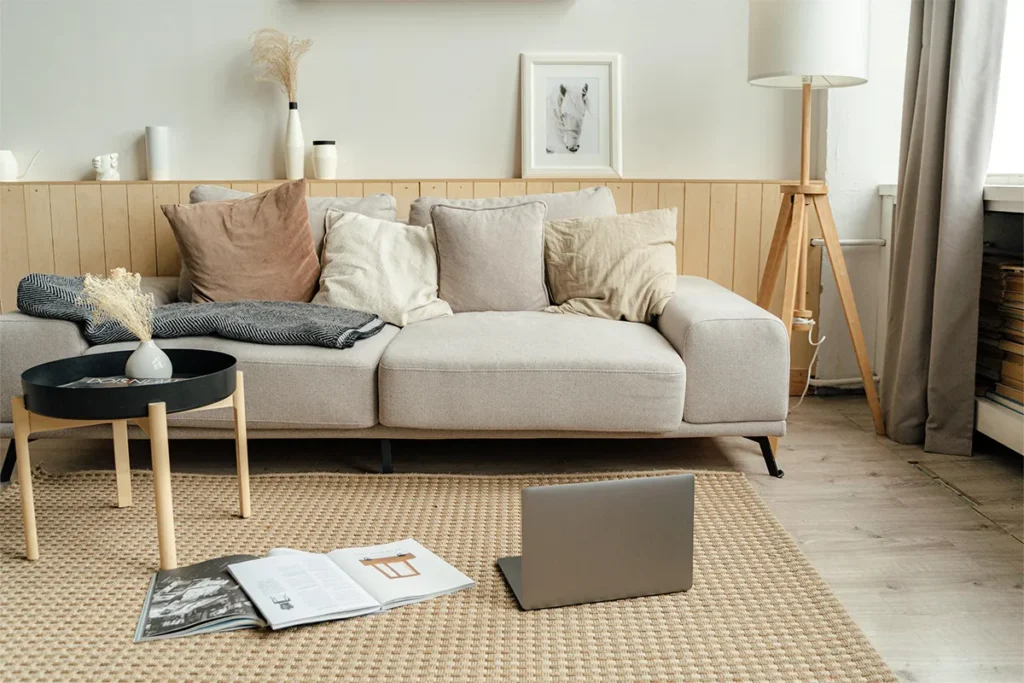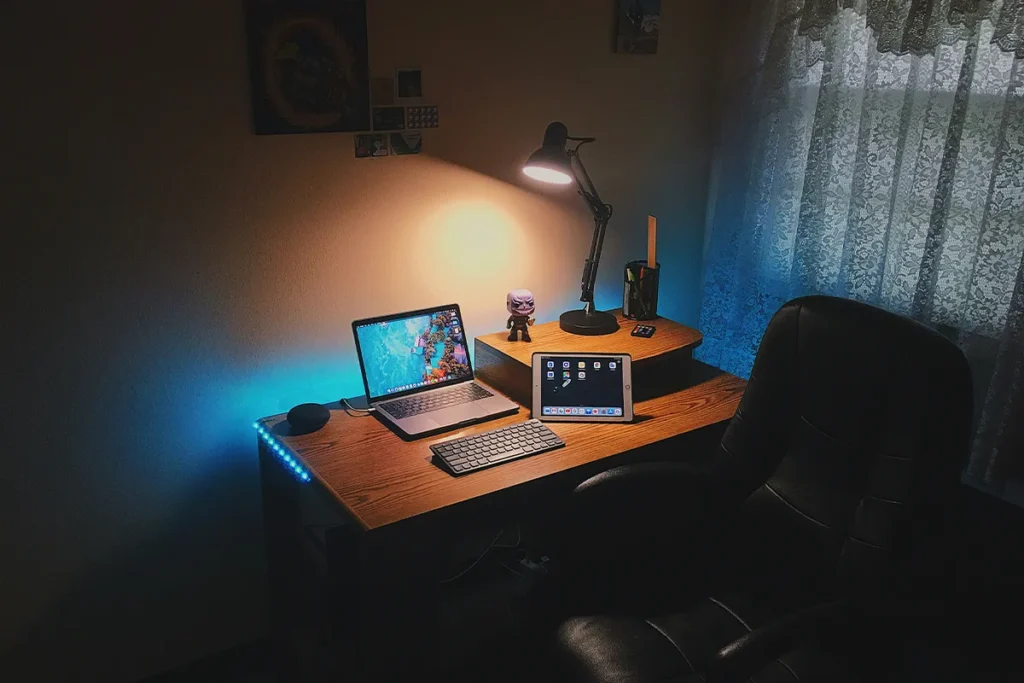If you feel dull and lethargic every day before you go to work, you have landed on the right page. With just a little effort, dopamine decor effects on mood can leave big changes on your daily home and office routine. It works like a game-changer that raises your productivity, efficiency, and aligns your focus. These changes do not require costly renovations or fancy gear. Small steps such as adding a plant, using a warm desk lamp, and keeping tools within reach are enough to make a clear difference.
With the right guide that enables you to learn more about dopamine decor design impacts on moods and your productivity, you can move in the right direction. If you are looking to optimize your homes and offices according to the dopamine decor, then you have landed on the right page.
Dopamine Decor Effects On Mood
Before you touch any corner, think about how a room can change how you feel. These ideas show clear ways to lift energy, calm stress, and remove tiny hurdles. Treat them like a checklist you can try in a few minutes. Start small, watch your mood, and change one thing at a time.
Start With Your Goal, Then Design Backward
First, decide how you want the room to feel. Maybe you want calm energy, or you need a soft push each morning. When your goal is clear, every item has a job. Keep one energizing accent, one calming base, one reward cue you can see, and one friction reducer you can feel. This keeps the theme tidy and useful. If you want ideas fast, gather dopamine decor aesthetic ideas for work on one page and build from there.
Color Psychology Without The Hype
Color works fast on mood. Soft neutrals make a calm base. One bright accent can add interest without stealing focus. Mid-tone blues and soft greens help with long work time. Mid-tone corals or golden saffron can add gentle drive. If you can paint, test small swatches in morning and afternoon light. If not, add color with art, a desk mat, or one shelf item. Tiny bits of color lift mood without clutter. Consider exploring the best wall colors for focus as you choose your palette.

Light That Aligns With Your Body Clock
Light guides your day. Bright mornings tell the brain to begin. Softer afternoon light keeps you steady. Try facing your desk toward a window while avoiding glare on the screen. Add a dimmable desk lamp and pick lamps for the room that match your tasks and reduce glare. In the evening, use warm bulbs to cut harsh blue light. With a simple setup, you enjoy natural light circadian benefits that support mood and focus.
Texture, Contrast, And Little Bursts Of Novelty
Small changes in feel keep the brain awake. A smooth desk beside a ribbed cup makes a nice shift. A matte planner next to a glossy plant leaf adds quiet interest. Keep patterns simple so they do not fight for attention. Aim for one small surprise in each view, such as a bright bookmark or a simple paperweight.
Nature As A Reliable Mood Regulator
One living plant can lower stress. New plant owners can try pothos or snake plant for easy care. Natural notes like a wood tray, a stone coaster, or a water carafe add gentle variety. Used together, these choices build a biophilic design for mental health that helps steady work all week.
Scent And Sound: The Overlooked Duo
Scent and sound reach mood centers quickly. A light diffuser by the door can mark the start of work. Clear citrus or gentle mint can help before hard tasks. Soft cedar can fit late-day planning. Keep scent levels low. For sound, pick tracks that blur noise but do not distract thinking. Brown noise or calm instrumentals are good picks. Keep a short playlist only for focus time so it becomes a cue. This is the practical side of aromatherapy scents for focus and soundscapes for deep work.
Layout That Reduces Friction
Every extra step can drain your drive. Place items for your top three tasks within arm’s reach. Keep camera, notepad, and water on one clear line so you find them fast. Mount a task light where your hand often moves. Use a reset tray for cables, sticky notes, and a pen. When everything has a home, action feels easy. You also gain more small wins each day.
Order Is Not Minimalism
Empty rooms can feel cold. The brain wants signs that work is real. Instead of removing everything, show one thing from each category. Keep one current book, one hourly tool, and one token with meaning, like a thank-you card. This gives clutter-free workspace benefits while keeping human warmth.
The Reward Shelf: A Simple Dopamine Lever
Place a slim shelf where you can see it during short breaks. Show small wins there with a page counter, a habit chain, or a daily tick calendar. The shelf becomes a friendly scoreboard that nudges progress. Each checkmark feels good. Keep the shelf neat so it stays a cue, not a mess.
Seating, Posture, And Energized Comfort
Posture guides alertness. Pick a chair that supports a straight, relaxed back. If you cannot change the chair, add a small pillow behind your lower back and a footrest. Set the seat height so elbows rest at ninety degrees on the desk. If space allows, use a balance board for short movement breaks. Steps like these create ergonomic seating for energy and reduce afternoon slumps.
Personalization Without Visual Noise
Your dopamine decor office should fit who you are now. Keep personal items in one tidy group to avoid scattering. Choose one color family for accents so the space stays calm. Rotate small items each month to keep the room fresh. This protects personalization without distraction and keeps gentle novelty alive.

Build Your Dopamine Decor Ideas For Work Plan In 30 Minutes
A short plan gives quick wins and saves energy for real tasks. These steps turn a long list into a tiny guide you can use today. You will set a simple target, place clear cues, and lower friction so progress feels smooth. Keep changes small, visible, and easy to repeat.
- Set Your Goal: Write one line that names the room mood you want each morning.
- Pick Base and Accent: Choose a calm base and one bright accent you can see from your chair.
- Position For Light: Face natural light without glare and add a dimmable lamp.
- Place A Plant: Put a low-care plant at mid-height within your side view.
- Plan Audio: Use brown noise for deep work and light piano for routine tasks.
- Create A Reset Tray: Store cables, notes, and a pen in one container.
- Add A Reward Cue: Track wins on a shelf with a checklist or counter.
- Dial In Ergonomics: Adjust chair, elbow angle, and monitor distance.
- Snap And Edit: Take a photo and remove one distracting item.
- Schedule Maintenance: Set a ten-minute weekly reset.
This tiny system lowers delay and builds small wins. Clear cues and visible progress lift dopamine without strain. When energy drops, change one variable and test again. After a few rounds, the plan feels steady and easy.
Color And Accent Examples You Can Use
Simple color kits keep the room calm, while one accent adds spark. These mixes center your eyes on work, not clutter. Treat them like small sets you can build with paint, fabric, or desk items. Choose dopamine decor curtains in a calm base with one bright trim so you can open them wide in the morning and close them slightly in the afternoon. Keep one accent per sightline for a clean look.
- Gray + Coral: Soft gray walls and a white desk with coral bookends and a saffron cup for a gentle lift.
- Beige + Sky Blue: Warm beige and an oak desk with a sky blue desk mat and matching notes for clarity.
- Sage + Brass: Pale sage walls with a black desk, a brass lamp, and a tiny marigold vase for quiet warmth.
Try one palette for seven days and keep a tiny mood log. If focus slips, swap only the accent and keep the base. That simple test shows the true effect. Small swaps often make big gains at low cost.
A Simple, Science-Friendly Routine
A clear routine turns the room into a cue map you can trust. Setup stays short, and rewards stay visible from start to finish. Use it to start well, protect deep work, and end with a clean reset. Collect dopamine decor ideas for the home office in a short checklist you can open each morning before you start. Repeat the steps until the flow feels natural.
- Arrival Ritual: Open blinds, turn on the lamp, take two slow breaths, and start your focus list.
- Activation Block: Work 25 to 50 minutes on the hardest task, then mark a small win.
- Reset Routine: Clear the desk into the tray, write tomorrow’s first step, and power down the lamp.
This loop anchors the start, guards progress, and keeps clutter away. Over time, it builds steady rewards and a steady mood. You begin to link the space with smooth action, not struggle. That quiet link helps you have reliable days.
Common Mistakes To Avoid
A few traps can derail a good plan. Many rooms chase new looks or dopamine decor trends without clear rules.. Other rooms skip the basics like light and posture. Use this list to stay on track from week one.
- Accent Overload: Limit bright colors to one per sightline to reduce noise.
- Scent Overuse: Keep diffuser strength low and run short sessions only.
- Tool Obstruction: Do not place decor on top of tools; keep reach paths clear.
- Random Art Lines: Align frames and shelves with furniture edges for a calm look.
- Chair Neglect: Fix posture first because body comfort drives mood and stamina.
When you avoid these issues, the space feels calm and ready to help. You save new looks for small joys, not constant distraction. Cleanup is faster, and the room supports real work as projects change. The result is a workspace that stays friendly and effective.
Sample One-Day Test You Can Try Tomorrow
Morning: open blinds, turn on the desk lamp, and plan for five minutes with a warm drink.
Midday: take ten minutes to move, refill water, and switch to a softer playlist.
Late afternoon: check the reward shelf, note one win, tidy the tray, and water the plant if needed.

Why This Works Over Time
Dopamine responds to clear cues and real rewards that repeat. When the same cue leads to the same action, the brain learns fast. A focus playlist can signal writing. A warm lamp can signal meeting time. A visible checklist can signal the finish time. Each closed loop makes tomorrow easier. Design the space so that action is the default and friction is rare.
Table: Dopamine Decor Effects on Mood
| Area | What to Set | Quick Steps | Why It Helps |
|---|---|---|---|
| Goal | Clear room mood | Write a one-line goal and keep it visible | Guides choices and avoids guesswork |
| Color | Calm base, one bright accent | Test small swatches or add a desk mat or art; choose best wall colors for focus | Adds gentle interest without clutter |
| Light | Morning bright, evening warm | Face a window without glare and add a dimmable lamp | Syncs the body clock and keeps energy steady |
| Texture and Contrast | Soft mix of surfaces | Pair a smooth desk with a ribbed cup and a matte notebook | Small touches keep attention awake |
| Nature | Plant and natural notes | Add a pothos or a snake plant; use a wood tray or stone coaster to support biophilic design for mental health | Lowers stress and lifts mood |
| Scent | Light and simple | Use a tiny diffuser with citrus or mint; keep the scent level low | Marks the start of work and clears the mind |
| Sound | Gentle background | Play brown noise or calm instrumentals for deep work | Blurs noise without pulling focus |
| Layout | Tools within reach | Line up the camera, notepad, and water; mount a small task light | Cuts extra steps and saves effort |
| Order | One item per category | Keep one book, one hourly tool, and one token with meaning | Feels warm while staying clear |
| Reward Shelf | Small wins on display | Track checks, chains, or page counts on a narrow ledge | Tiny rewards build steady drive |
| Seating | Neutral, comfortable posture | Set the seat height; add a lumbar pillow and a footrest for ergonomic seating for energy | Boosts stamina and mood |
| Personal Touch | Few, tidy, and current items | Group photos, use one accent family, and rotate monthly | Keeps joy without visual noise |
| 30-Minute Plan | Fast-start kit | Follow ten simple steps, then make a quick photo edit | Creates quick wins you can repeat |
| Daily Routine | Start, focus, reset | Use an arrival ritual, a focus block, and a clean reset | Builds habits that stick |
| Common Pitfalls | What to avoid | Limit accents, keep the scent level low, and keep reach paths clear | Prevents noise and protects focus |
Conclusion
A home office can be more than chairs and screens. With a few smart choices in color, light, texture, and layout, the room starts to help you work. Small cues like a plant, a dimmable lamp, and a short checklist create steady wins you can see. For context, peer-reviewed research on light and mood shows that suitable daytime and evening light can support circadian rhythms, sleep, and overall well-being. With time, those wins build smooth habits that feel natural.
Keep a calm base and add one bright accent in each view. Place tools within reach, track progress where you can see it, and refresh one tiny detail each week. This steady method fits how dopamine works best, with clear rewards and low friction. The payoff is a mood-boosting home office setup that lifts mood and focus all day.
